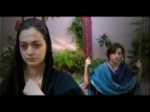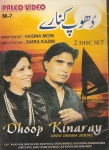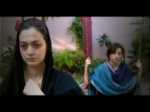Can you imagine being expected by the government to paint a bright, vibrant rainbow of its democratic growth when you have no brushes and only two pots of paint?
Welcome to the world of journalism in Pakistan! You will either be discovered finger-painting messy and chaotic pieces of work in order to please the government or trying hard to understand the core causes of confusion and anarchy in the country. You will be expected to come up with workable solutions to the never ending problems and suddenly end up behind the bars on wrong charges.
One of the many self-appointed Presidents of Pakistan publicly threatened two senior Pakistani journalists in front of several hundred Pakistani at a speech in New York on Sept 13, 2002. Earlier other journalists were threatened and even thrown out of the President’s public meetings, mainly during his promotion for the sham referendum. Many of these actions pass by without anyone making a note of them. In all such events, the journalist concerned happens to be a target of the enduring spate of democratically humiliating onslaught against the press in Pakistan.
Pakistani press is now becoming the victim and the government is suspicious of those journalists who portray the “wrong” side of government’s progressive and nation friendly policies of a “democratic” government.
These personal assaults on journalists are not restricted alone to the military dictatorship. R. S. Afridi is, even today, paying the price of messing with Nawaz Sharif. According to the Editor-in-Chief of the Jang Group, he was told by two higher-ranking officials to dismiss 16 journalists on Nawaz Sharif’s rolls. The Editor-in-Chief was strictly told that “nothing adverse should be written concerning their (the Sharif’s) loans, business, individual matters etc,”
The owners of The Friday Times, Najam Sethi and Jugnu Mohsin, have been reporting phone tapping and other stalking since ages now. It has time and again been pointed out that Pakistan is an Egypt in making. Our ex-Presidents have sealed the fate of Pakistan. Once a Journalist working for an English paper very cleverly pointed out, “we do [our work] with a hand tied behind our back,” and if you are unfortunately a victim “you are guilty until proven innocent.”
Print media is just the only source that is not as much under the civilian dictators’ influence as the electronic media is. The thought of taming the press is an important part of the supervision our ruling party leaders are getting. Each and every effort to suppress the press has a piece of the big mystery. Worst of all we do not even know our left toe from our right when it comes to understanding what’s happening around us. Exactly like the reports and views on Radio and TV, the government expects the journalists to craft and design deception, distortion and dishonesty in its favor.
Generally the dictators suppose that the sinister invasion of the truth everywhere would let loose bitterness and resentment rather than satisfaction. Any attempt on part of the media to inform the public is seen to be unleashing a sense of peril than power and control.
An elected regime condemns itself to death if the majority of the citizens who have to decide between various choices make their decision in ignorance of reality, blinded by craze or mislead by fleeting opinions created by the controlled journalists. Press would most certainly not like to be disloyal to its duty by becoming an ingredient of a deceitful game played out by the government for its endurance.
The media geared to this particular purpose inhabit a tiny niche in the massive gathering of solely profit-making or partisan press. The distinction between speaking reasonably and talking gibberish is very obvious. In the same way, printing phony information and not allowing a newspaper from printing certain information are also very obvious acts. For an elected government it is wise to accept the hurdles than to try to remedy the pro-opposition journalist problems by power.
Certainly, a number of the partisan reporters are a part of committing the malicious ill of disguising personal judgment as information. But the government does not need to victimize the entire press to collective penalty because its agenda of not letting a typical Pakistani comprehend the whole story behind all that glitters is being damaged.
By: Shiza Nisar














